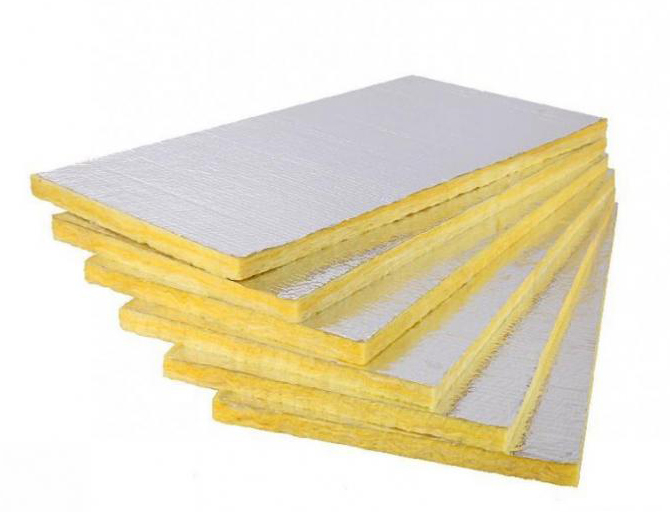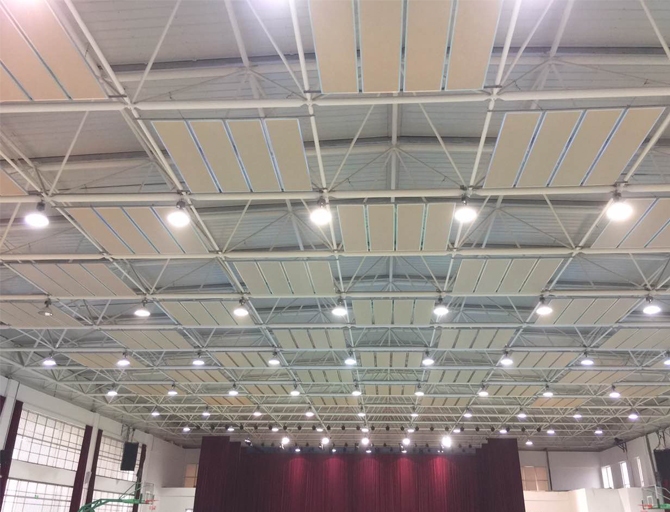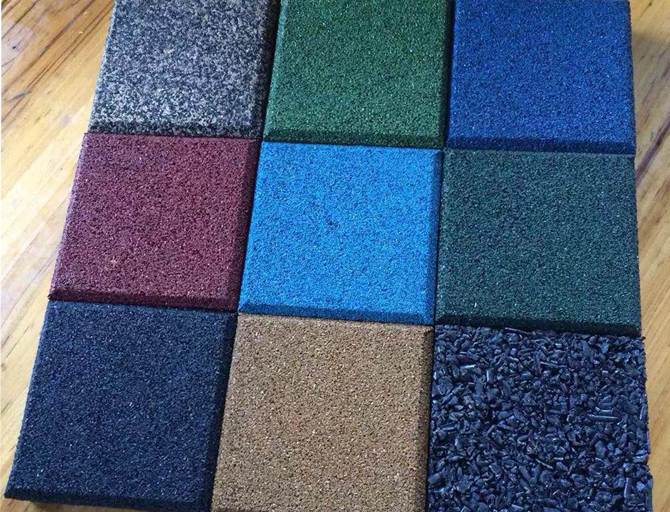Noise prevention and control measures of building drainage p
With the improvement of social and economic level and the development of computer network technology, a lot of work can be done at home, people stay indoors more and more long every day. Some data show that people spend more than 80% of their time indoors every day, which makes people more and more demanding for indoor environment, and indoor noise pollution greatly affects the comfort of indoor environment. In order to pursue comfortable and quiet living environment, people pay more and more attention to how to reduce indoor noise pollution.
1. Sources of indoor noise pollution
Noise pollution caused by water supply pipeline
The noise of water supply pipeline is one of the main causes of indoor noise pollution. The specific noise is mainly caused by the following reasons:
(1) Vibration causes noise pollution. The impact of pipeline water flow will make the water supply pipeline vibrate, and the speed and direction of water flow, the change of direction and the start-up and closing of control valve and other accessories will cause vibration and noise pollution to the pipeline; the water pump in the high-rise building is also the cause of noise pollution to the pipeline, and the noise caused by the water pump will be introduced into the housing with the pipeline, which has a non impact on the residents at the bottom of the building Chang Da.
(2) Cavitation causes noise pollution. Cavitation noise pollution will be intensified with the increase of the internal pressure of the pipeline. In the water supply system, in the pipeline where the hot water supply pipe goes down and up, the cold water makes part of the air in the cold water be separated during the heating process, and accumulates and forms air mass at the highest place where the pipe goes down and up. When the outlet valve is opened, the water and gas will be impacted, resulting in noise pollution Dye. (3) Water flow causes noise pollution. The water flowing in the pipeline will make a sound, and the water noise will be intensified due to the increase of water speed and local resistance.
Noise pollution caused by drainage pipes
Drainage pipe is also one of the main causes of indoor noise pollution. The specific noise sources can be divided into three categories:
(1) Noise from cross drains. The drainage of indoor sanitary appliances will be discharged into the horizontal pipe, the water flow in the horizontal pipe and the impact of the pipe wall will cause noise, and the water jump and air fluctuation in the horizontal pipe will cause the water seal to cause bubble emission and noise pollution. In addition, the water flow in the horizontal branch pipe of the drainage will impact the T-shaped pipe or cross shaped pipe at the connecting part when entering the drainage riser.
(2) Noise of drainage riser. In the process of falling, the water flow at the junction of the horizontal drain pipe and the vertical drain pipe forms the rotating water film and the air plug flow, which causes the gas in the vertical drain pipe to compress or expand and emit noise. In addition, the impact of water flow on the pipe body and air flow in the pipe will also cause noise.
(3) Noise caused by sanitary appliances. When the indoor sanitary ware is drained, it will produce a sound similar to air extraction due to eddy current, and the noise pollution caused by the toilet drainage is greater.
2. Prevention and control measures of indoor water supply and drainage pipeline noise
Noise control measures of water supply pipeline
The noise of water supply pipe mainly comes from pipe vibration, cavitation and water flow. Therefore, to reduce the noise caused by indoor water supply pipe, we can also focus on these three aspects:
(1) Reduce noise pollution caused by pipeline vibration. In the construction process, an elastic insulation cushion should be set between the water supply pipe and the support bracket. For example, where the water supply pipe passes through the wall, the elastic material should be filled at the outer wall and the opening of the pipe, so as to reduce the vibration of the pipe; in the place where the water supply pipe enters the house, the vibration damping equipment can also be set, so as to reduce the mutual influence of the user when using water.
(2) In order to reduce the noise pollution caused by cavitation, in the down and up feeding system, the highest water distribution point is used for air release. If there is a household metering meter on the branch pipe entering the house, the automatic exhaust valve can be installed on the top of each water supply riser; in the up and down feeding system, the automatic exhaust valve can be set at the highest point of the main water distribution pipe and the up raised pipe.
(3) Select appropriate pipeline materials to reduce noise pollution caused by water flow. The suitability of pipeline materials directly affects the noise pollution caused by water flow to the water supply pipeline. Therefore, it is necessary to select the water supply pipeline materials with higher density according to the actual conditions, and select the water outlet valves and faucets with slower opening and closing speed. In addition, the water supply pipeline with appropriate pipe diameter should also be selected. The selection of water supply pipes should be coordinated according to the water flow speed and pipe diameter. The water flow speed of main pipes of domestic water supply pipes should not exceed 1.5m per second, and that of branch pipes should not exceed 1m per second. In the design process, the slower water flow speed should be selected according to the actual situation and the pipe diameter of water supply pipes should be appropriately enlarged.
Noise control measures of drainage pipeline
(1) Selection of low noise pipeline materials
Since the reform and opening up, with the increasingly vigorous development of the construction industry, especially in recent years, plastic pipes have been widely used in the drainage system engineering of indoor buildings with the advantages of low price, convenient installation, small flow resistance, no rusting, light weight, etc., and with the growing market advantage, they have gradually replaced the traditional drainage iron pipes, but in fact, plastic pipes have water noise Due to the disadvantages of large sound (about 10dB higher than ordinary cast iron drainage pipes) and poor sound insulation effect, it is recommended to use cast iron drainage pipes in buildings with strict requirements on noise, and plastic pipes with large weight and good sound insulation effect can also be selected according to the actual situation, such as U-PVC spiral pipes with better performance in recent years. In addition, from the perspective of improving drainage water flow conditions, appropriate accessories can be selected.
(2) Choose drainage equipment with low noise
In order to reduce the drainage noise caused by the water in and out of the toilet and the water tank, the structure of the toilet can be improved. The silencing type toilet should be selected, and the appropriate height of the water tank should be selected according to the situation to reduce the noise caused by the flushing pressure.
(3) Strengthen building ventilation capacity
According to the ventilation situation, building drainage system can be divided into four types: roof extended ventilation drainage system, double riser drainage system, appliance ventilation drainage system and circular ventilation drainage system. According to the requirements of the building, in general, the double riser drainage system should be selected preferentially, and a special vent riser should be set; it can effectively improve the drainage capacity of the riser, balance the positive and negative air pressure of the riser, and reduce the occurrence of air plug, so as to reduce the noise.
The use of new drainage system can also reduce the noise effect of drainage pipes; the use of special accessories in the upper part of the new drainage system has the function of controlling double risers to form an ideal air core and preventing the flow of cross pipes from cutting off the air flow; the use of special accessories in the lower part can reduce the water jump height and stabilize the air pressure of drainage pipes.
(4) Adopt the same floor drainage system
According to the requirements of code for design of building water supply and drainage: the drainage pipe of sanitary appliances in residential toilet shall not cross the floor and enter the residential area. Considering the privacy of the owners, the problem of pipes in each floor should be solved in the same floor or at home. Because the drainage system in different floors often encounters the situation that the pipes are punctured by the households in different floors in the process of dredging the pipes, or the pipes need to be replaced due to water leakage, the sewage is easy to pollute the space of the households in the lower floor. The design of drainage system on the same floor refers to that the drainage pipes of sanitary appliances (sewage horizontal pipes and water branch pipes) do not cross the floor and enter the households. The plane construction design in the same floor makes the sewage and its waste discharge reach or even exceed the same and other drainage methods, and enters the main drainage pipe (main sewage riser). In case of emergency dredging and cleaning, the drainage method can be treated in the drainage system of this floor.
Reasonable arrangement of pipes and rooms
In order to reduce the noise pollution caused by the indoor water supply and drainage pipes, it can also be realized by reasonable arrangement of the layout of pipes and rooms. The water pump room, toilet and other rooms with water supply and drainage equipment shall be arranged adjacent to each other as far as possible, and shall be separated from the bedrooms, workrooms and other rooms with high requirements for the surrounding environment, such as the living room. The mechanical noise pollution of the water pump house is relatively large. In order to avoid the aggravation of noise pollution caused by air transmission, the water pump house should not be arranged in the room outside the high-rise building, but in the basement at the bottom of the building. In addition, in order to reduce the noise pollution, the equipment in the water pump house should also be selected, for example, the water pump unit with good performance and low noise should be selected, and the vibration damper head should be set at the water inlet and outlet of the water pump.
Finally, the damage of noise pollution to human body and buildings can not be underestimated, and the noise pollution in indoor water supply and drainage pipes is difficult to be completely eliminated. In order to create a better and more comfortable living environment, corresponding measures should be taken to prevent and control the noise caused by water supply pipes and drainage pipes. From the point of view of prevention and control, this paper puts forward some suggestions on the prevention of noise in indoor water supply and drainage pipes. However, in the actual construction process, we should make a specific analysis according to the specific situation, and make use of our own technical and economic conditions to optimize, so as to reasonably prevent noise pollution, create a comfortable, quiet and healthy indoor living environment, and improve People's living standard.



